
Inverter feed system with anti-clogging settings; the thicker and larger pre-conditioning zone for ingredients; the twin-screw design for thorough mixing and expansion; the ability to set up adjustable molds of various sizes; together with Siemens motors providing a powerful and stable drive system; make the RICHI Machinery the first choice of equipment for aquafeed production.
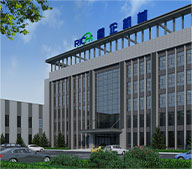
Brand
RICHI

Application
Aquafeed

Finished
Extruded Pellets
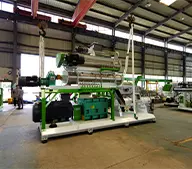
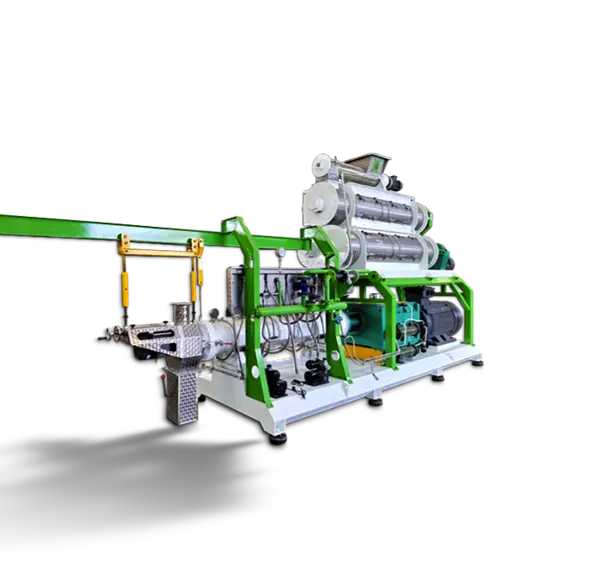
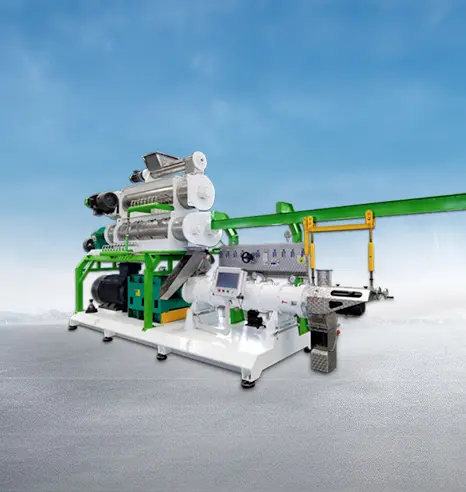
| Model | SPHS75x2 | SPHS120*2 | SPHS120*2 | SPHS150*2 | SPHS185*2 |
|---|---|---|---|---|---|
| Main Motor Power(Kw) | 55 | 90 | 110 | 200 | 355 |
| Screw Diameter(mm) | 75 | 120 | 120 | 150 | 185 |
| Feeder Power(Kw) | 1.5 | 1.5 | 1.5 | 1.5 | 2.2 |
| Conditioner Power(Kw) | 7.5 | 11 | 11 | 11 | 11 |
| Conditioner Specifications | DC400-244 | DC500-244 | DC500-244 | DC600-300 | DC600-300 |
| Differential Conditioner Power(Kw) | 11 | 11 | 11 | 15 | 15 |
| Differential Conditioner Specifications | DC400*300-244 | DC500*400-300 | DC500*400-300 | DC600*500-300 | DC600*500-300 |
| Production Output(TPH) | 0.5-1.0 | 1.5-2.0 | 3.0-4.0 | 5.0-6.0 | 10-12 |
Technological innovation is essentially all about customer service. To make you feel the convenience of RICHI's products, technologies and solutions in the process of aquatic feed production.
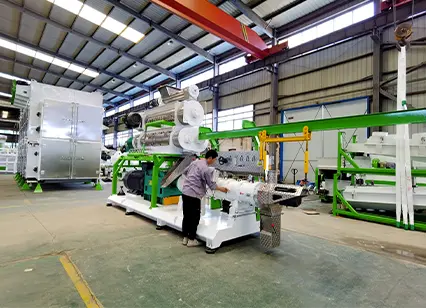
Feeding and conditioning systems
The optimized conditioning system with inverter feeding system improves the safety, nutritional value and maturation of the raw material to a great extent. This improves the overall quality of the feed from the source and ensures healthy feeding.
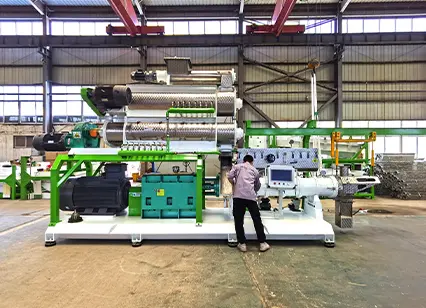
Drive system
High-end Siemens industrial grade drive motor drives the drive shaft of RICHI aquafeed extruder machine, which is more stable and durable than traditional belt drive. In the long run, this not only improves efficiency but also saves maintenance costs.
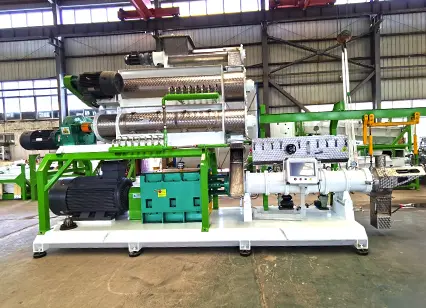
Structure and material
The body of the extruder is made of high quality and high specification alloy steel, which is sturdy and durable, reduces resonance and runs stably. The parts that come into contact with the raw material are made of high grade stainless steel, which does not affect the raw material in any way and greatly improves corrosion resistance..
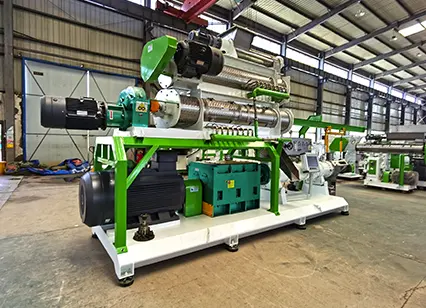
Control and Safety
Each extruder machine is equipped with an independent electric control system and safety stop function. It can not only avoid losses caused by perceived errors, but also effectively protect the extruder and subsequent production equipment.
Explore our efficient and streamlined purchasing process, designed to simplify and optimize the acquisition of a complete aquatic extruded feed production plant. Every stage is tailored to meet your specific requirements, from the initial schematic design and precise manufacturing processes to secure payment methods and seamless on-site installation and commissioning. Furthermore, our comprehensive spare parts service provides ongoing support and ensures optimal machine performance, offering you long-term reliability and peace of mind.


Solution Formulation
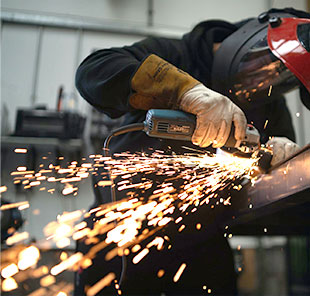
Equipment Manufacture

Secure Payment
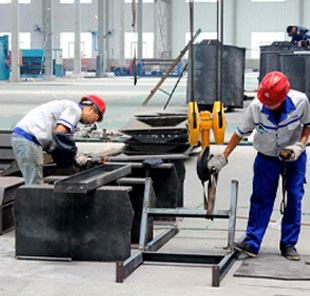
Spare Parts Service

HENAN RICHI MACHINERY CO.,LTD
Henan Richi Machinery Co., Ltd was founded in 1995. After nearly thirty years of development and expansion, RICHI Machinery has grown into a modern enterprise covering an area of 60,000 square meters and integrating independent research and development, production and sales.
The products involve feed pellet machinery and engineering, biomass pellet machinery and engineering, organic fertilizer machinery and engineering, conveying equipment and engineering, steel structure engineering, silo, automation control technology and engineering, etc., and each product series has passed ISO 9001 international quality management system certification and CE certification!
Get Quote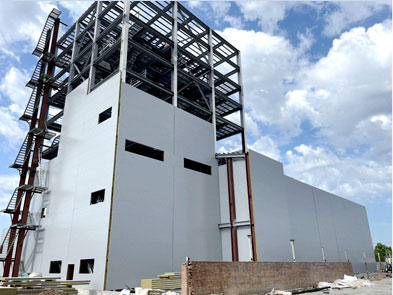

This state-of-the-art equipment supports a wide range of feed formulations for poultry and livestock, improving feed quality and reducing production costs. And its scalable design accommodates future expansion.
Learn More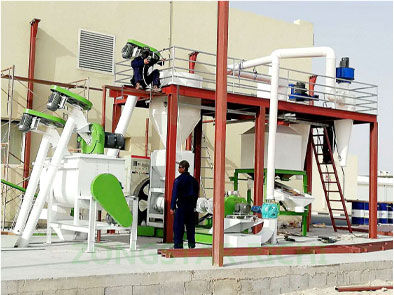

The system is fully automated, enabling seamless operation with minimal labor and supporting sustainable agricultural practices through the use of alfalfa and other forages.
Learn More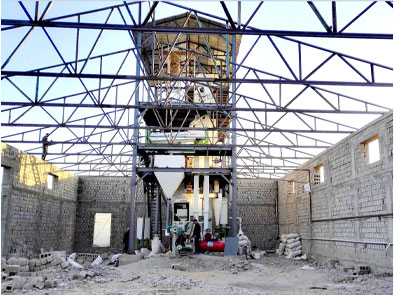

Hardwood residues are processed into durable, high-energy biomass pellets. Designed for industrial production, the system utilizes advanced drying and pelletizing technologies to ensure efficiency and quality.
Learn More

This project is capable of producing fish and shrimp feeds, equipped with precise extrusion technology for superior feed quality. The customer emphasizes its reliability and ease of operation as the main advantages.
Learn More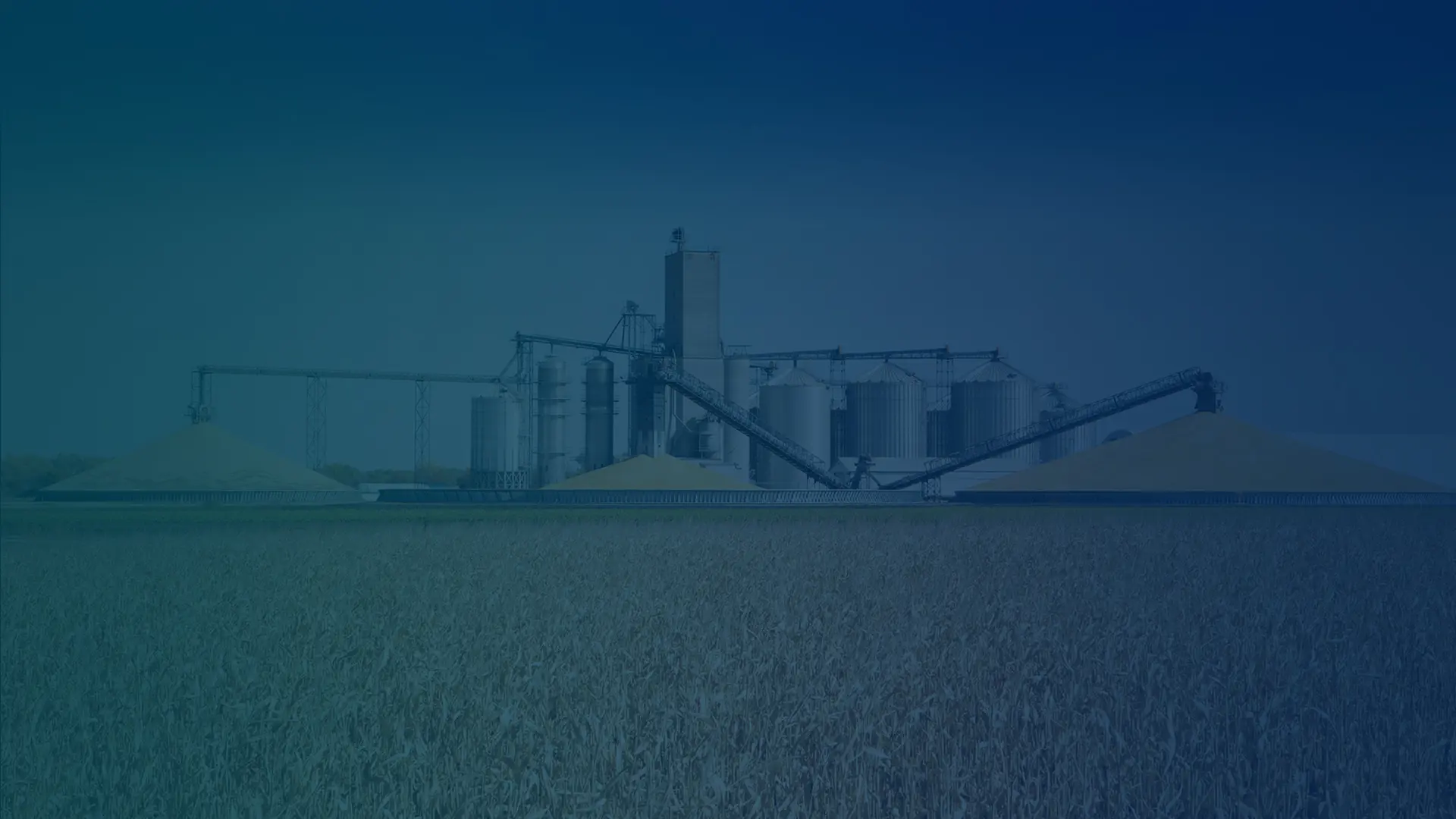
What kind of aquatic feed plant do you want to establish?
How many tons per hour about this plant you want to build?
Where will your aquatic feed mill plant be built?
When do you plan to start this project?
A twin-screw extruder is a machine used to produce feed pellets, especially for aquafeed, by blending, heating, and shaping raw materials. Its twin-screw design ensures thorough mixing and uniform cooking, resulting in consistent pellet quality. This design also allows flexibility to produce different types of feed, like floating or sinking pellets, by adjusting settings such as moisture, temperature, and die shape. Twin-screw extruders are versatile, handling various raw materials and delivering efficient, high-capacity production.
Using a twin-screw extruder for aquafeed production offers several key benefits. It provides thorough mixing and even heating, which results in uniformly textured and nutritionally consistent pellets. The twin-screw design also supports high flexibility in raw material choice, allowing a wide range of feed ingredients. With adjustable settings, it can produce both floating and sinking feed for various aquatic species. Additionally, the twin-screw extruder is energy-efficient and handles high-moisture materials well, ensuring optimal performance and reducing waste.
The twin-screw extruder ensures consistent pellet quality through its twin-screw design, which provides thorough mixing and even heat distribution for uniform cooking. This design minimizes variations in pellet density and texture. The preconditioning zone further optimizes moisture and temperature control, essential for balanced feed quality. Additionally, the adjustable die allows precise pellet size control, while the high-efficiency motor and gearbox deliver consistent power for stable production, reducing quality fluctuations even during long production runs.
The aquafeed twin-screw extruder can handle a variety of raw materials, including fish meal, soybean meal, corn, wheat, and other grains, along with essential oils, vitamins, and minerals. Additionally, it processes high-moisture materials and additives like binders or preservatives to enhance pellet durability and nutritional content. This flexibility allows the extruder to produce feed tailored to different species’ needs, making it highly adaptable for a range of aquafeed formulations.
The aquafeed twin-screw extruder can produce a variety of pellet sizes, typically ranging from 0.5 mm to 20 mm in diameter. This size flexibility is achieved through the adjustable die settings, allowing customization to meet the dietary needs of different aquatic species. Smaller pellets are ideal for juvenile or small fish, while larger pellets are used for adult fish or larger aquatic animals, ensuring tailored feeding options for various growth stages and species.
Yes, the twin-screw extruder is well-suited for high-moisture materials. Its design allows efficient processing of moist feedstocks, ensuring even mixing and heating, which improves pellet quality and stability. The twin-screw mechanism provides the pressure and heat needed to handle high-moisture content, making it effective for producing aquafeed with consistent texture and nutrient retention.
Yes, pre-conditioning is generally required for the aquafeed twin-screw extruder. Pre-conditioning involves heating and hydrating raw materials before they enter the extrusion process, improving material texture and consistency. This step helps to retain nutritional value and ensures that the materials mix and cook evenly during extrusion, which enhances pellet quality and durability. It also supports better pellet expansion and floating capabilities for feeds designed for different species.
The power requirements for an aquafeed twin-screw extruder typically vary depending on the production capacity and specific model. Generally, these machines require a high-power motor, often ranging from 50 kW to over 200 kW. The extruder’s dual-screw design and high-energy demands ensure thorough mixing, heating, and shaping of feed materials, which is critical for producing high-quality aquafeed pellets. It’s recommended to confirm exact power needs with the machine’s specifications or consult the manufacturer to match power requirements with production needs.
Yes, regular maintenance is essential for the twin-screw extruder to ensure it operates efficiently and maintains pellet quality. Frequent inspection of components like screws, the die, gearbox, and motor helps identify wear and tear early, preventing unexpected breakdowns. Lubrication of moving parts, cleaning of feed inlets, and monitoring temperature and pressure settings are key maintenance tasks. Keeping up with maintenance prolongs machine life, optimizes energy use, and sustains consistent pellet output, especially in high-demand production environments.
If you need further information, please contact us

Note: Pellet production is a continuous and complex process, requiring many equipment to complete the production from raw materials to finished pellets. Therefore, it is suitable for commercial projects but not for personal use.

RICHI stick to the service principle is: We are focusing on your future, your future is our future!
© HENAN RICHI MACHINERY CO., LTD 1995-2025